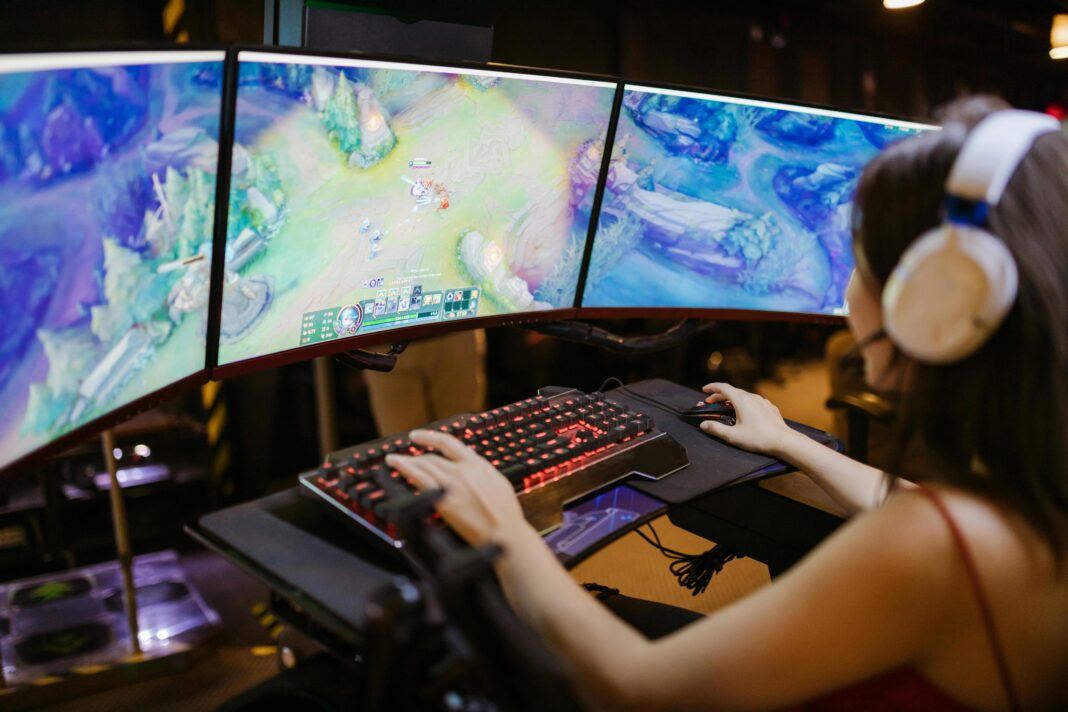The way we play video games has undergone one of the most radical shifts in entertainment history over the past decade. At the heart of this revolution lies game streaming – a technology that has fundamentally altered our relationship with interactive entertainment. This comprehensive examination will explore every facet of how streaming has redefined gaming, from technical infrastructure to cultural impact, business implications, and future possibilities.

The Technical Foundations of Game Streaming
How Cloud Gaming Actually Works
At its core, game streaming operates on a simple but technologically complex premise: rather than running games on local hardware, all processing occurs on remote servers in data centers. These powerful server farms, often equipped with hundreds of high-end GPUs and CPUs, handle the actual game rendering and physics calculations.
When you press a button, that input travels to the nearest server cluster (typically within a few hundred miles of your location). The server processes your action, renders the corresponding frame, compresses it using advanced video codecs like H.265 or AV1, and sends it back to your device as a video stream. This entire round-trip must happen in under 150 milliseconds to feel responsive – an enormous engineering challenge that requires:
- Ultra-low-latency encoding pipelines
- Massive bandwidth infrastructure
- Strategic server placement (edge computing)
- Adaptive bitrate streaming technology
The Infrastructure Behind the Magic
Major providers operate global networks of specialized data centers:
Microsoft’s Azure PlayFab powers Xbox Cloud Gaming with custom Xbox Series X server blades in over 60 regions worldwide. Each server rack contains multiple Xbox “motherboards” sharing resources dynamically.
NVIDIA’s SuperPODs for GeForce NOW utilize their data center GPUs (A10G and A100) with proprietary adaptive sync technology to minimize stutter.
Amazon’s AWS backbone supports Luna with custom game-optimized EC2 instances that can spin up GPU resources on demand.
These infrastructures represent billions in investment, explaining why only tech giants can compete in this space meaningfully.
The Accessibility Revolution
Democratizing High-End Gaming
Before streaming, playing AAA titles required:
- 500+consolesor500+consolesor1000+ gaming PCs
- Frequent hardware upgrades
- Physical space for equipment
- Technical knowledge for setup/maintenance
Streaming eliminates all these barriers. Now, a $200 tablet with Bluetooth controller support can deliver comparable experiences to premium hardware. This has massive implications:
Case Study: Emerging Markets
In countries like India, Brazil, and Indonesia where console penetration remains low due to import taxes and income levels, streaming provides first-time access to premium gaming experiences. Mobile-first gamers who previously only played lightweight titles like Free Fire or PUBG Mobile can now experience Forza Horizon 5 or Cyberpunk 2077.
New Player Demographics
The accessibility shift has brought in entirely new audiences:
- Working Professionals who want to game during commute/lunch breaks
- Parents who can’t justify dedicated gaming hardware
- Students with limited budgets and space
- Older Gamers who prefer simplicity over hardware tinkering
The Business Model Transformation
Death of the Traditional Purchase Model?
While not disappearing entirely, the $70 AAA game purchase faces disruption from:
Subscription Services
- Xbox Game Pass Ultimate ($16.99/month)
- PlayStation Plus Premium ($17.99/month)
- GeForce NOW Priority ($9.99/month)
These operate similarly to Netflix, but with key differences:
- Some offer “Netflix-style” all-you-can-play
- Others function as “bring your own license” platforms
- Many use hybrid models with rotating catalogs
Microtransaction Optimization
Streaming enables new monetization approaches:
- Instant “try before you buy” demos
- Session-based micropayments (pay per hour)
- Dynamic ad insertion during loading
Developer Economics
Game studios now must consider:
- Streaming-first design (smaller asset packages)
- Cloud-aware monetization
- Server-side processing opportunities
Example: Ubisoft’s “Scaling Star” technology in Assassin’s Creed Valhalla dynamically adjusts world detail based on connection quality.
Competitive Gaming and Esports Impact
The Latency Challenge
While casual gaming thrives on streaming, competitive play faces hurdles:
- Fighting games require <80ms latency
- Esports tournaments demand frame-perfect precision
- Current infrastructure can’t reliably meet these needs
Solutions in Development:
- NVIDIA’s Reflex technology for cloud gaming
- Microsoft’s DirectSR super-resolution for bandwidth efficiency
- Local server clusters for tournament venues
New Competition Formats
Streaming enables novel esports concepts:
- “Hardware equalized” tournaments where all players use identical cloud setups
- Mass participation events with thousands of concurrent players
- Instant spectating without download requirements
The Social and Cultural Shift
Changing Game Discovery
Traditional methods (store shelves, Steam charts) give way to:
- Streaming platform algorithms
- Instant social sharing (“play this with me now” links)
- Clip-based virality (TikTok integrations)
Evolving Play Patterns
Observed behavioral changes:
- Shorter average play sessions (25-40 minutes)
- Increased genre experimentation
- More co-op play through easy access
Technical Limitations and Challenges
The Bandwidth Barrier
Minimum requirements vs. reality:
| Resolution | Official Minimum | Recommended Reality |
|---|---|---|
| 720p | 10 Mbps | 15 Mbps |
| 1080p | 20 Mbps | 35 Mbps |
| 1440p | 35 Mbps | 50 Mbps |
| 4K | 50 Mbps | 75 Mbps+ |
Real-world factors like household sharing, WiFi interference, and ISP throttling often necessitate higher speeds.
Data Center Geography
Performance drops significantly based on distance:
- <300 miles: 20-40ms latency
- 300-600 miles: 40-70ms
- 600 miles: Unplayable for twitch games
This creates “gaming deserts” in areas far from infrastructure.
The Future Landscape
Emerging Technologies
AI-Assisted Streaming
- NVIDIA’s AI frame generation (adding interpolated frames)
- Deep learning super resolution (DLSS for streams)
- Predictive input anticipation
Blockchain Applications
- Decentralized server networks
- NFT-based game ownership verification
- Player-run streaming nodes
Long-Term Industry Projections
By 2030, analysts predict:
- 60% of gaming revenue will flow through streaming platforms
- Standalone consoles will become niche products
- “Gaming as a utility” will rival video streaming in revenue
FAQs
Q: Can I mod games when playing via streaming?
A: Generally no, since you’re not running local files. Some services like GeForce NOW allow limited Steam Workshop support.
Q: How does streaming affect game preservation?
A: It creates concerns – if services shut down, games may become inaccessible. Some advocate for hybrid streaming/download options.
Q: Will input lag ever match local play?
A: With 6G networks, advanced prediction AI, and edge computing, experts believe sub-10ms cloud latency is possible by 2028.
Q: Can I stream my own PC games to other devices?
A: Yes! Solutions like Moonlight, Steam Link, and Parsec offer this functionality with varying quality levels.
Q: Are there health benefits to cloud gaming?
A: Potentially – less fan noise, reduced heat output, and the ability to play in ergonomic positions beyond traditional setups.
Final Analysis
Game streaming represents more than just a new way to play – it’s reshaping the fundamental economics, culture, and technology of interactive entertainment. While not without challenges, the trajectory points toward an increasingly streaming-dominated future where gaming becomes truly device-agnostic and accessible in ways we’re only beginning to understand.
The coming years will determine whether streaming complements or replaces traditional gaming, but one thing is certain: the genie is out of the bottle, and there’s no going back to an era where gaming was tied to expensive, stationary hardware.
What does this mean for you as a player? More choices, fewer barriers, and an ever-expanding universe of gaming possibilities at your fingertips – quite literally. The question isn’t whether you’ll adopt game streaming, but when and how it will fit into your gaming life.

